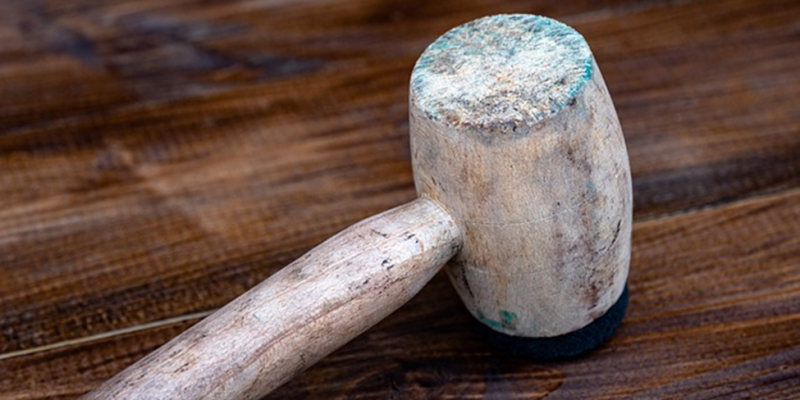Whether you’ve done DIY work around the house or not, there’s a pretty good chance you could identify a mallet if you needed to. There’s also a good chance that you are more familiar with rubber mallets than the wooden variety.
Knowing when to use rubber mallets versus wooden mallets is an important distinction to make. Read on and you will become an expert on when to use a wooden mallet, when to use a rubber mallet, and the key differences between them.
What is a Rubber Mallet?
A rubber mallet is exactly as it sounds. It’s like a larger hammer that has a big, rubber head on it. Whether for home DIY work or in construction, a rubber mallet can be a valuable addition to your toolbox. The face comes in different colors like white grey, beige, and black; choosing the latter can leave marks, so beware.
Rubber mallets can have different handles with some being metallic, some wooden, and others fiber. The rubber face can also be that thick rubber you have probably seen or a thick rubber pad covering a solid metallic head. Both serve specific purposes but rubber mallets, in general, are quite versatile.
What is a Wooden Mallet?
Mallets generally have the same shape and appearance, making it a bit confusing to know which one to pick. In woodworking, wooden mallets are common because they are great for tapping joints into place, working with dovetails, and gentle hammering without doing damage to the wood surface.
Wooden mallets have a solid wood head and are generally one piece with the hammer. That said, it could use another material but most of the wooden mallets you find are going to be entirely wooden. Knowing when to use one versus the other is a good place to start, so let’s look at the pros and cons of each type.
The Pros and Cons of a Rubber Mallet
There is a lot to love about using rubber mallets. Because of the softer head, they are safer to use on your fingers if you slip and miss. They are also very versatile, applying to several DIY projects including woodworking, metal bending, and more.
There are a few cons, however. If you use a rubber mallet with a dark face, it can leave a mark on the surface in question. There is also a bit of bounce back when you use a rubber mallet since the softer surface area has some bounce to it. Pay attention or you could catch a stray shot. Otherwise, rubber mallets are quite useful and safer than metal hammers.
The Pros and Cons of Wooden Mallets
Wooden mallets are more ideal for delivering a sharper blow. Think of them as the middle ground between rubber mallets and metal hammers. For woodworking, a wooden mallet is ideal because it can be used with dowels and chisels to get a more precise, refined hammering effect. Not to mention it is safe to use on joints while garnering enough force to successfully join those joints together.
The only real downside to a wooden mallet is that it is very limited in its use. Wooden mallets are basically only good for carpentry and woodworking, so if you don’t do much of either, this might not be the tool for you.
On the whole, wooden mallets provide a little more precision and power compared to rubber mallets. But rubber mallets are a lot more versatile than its counterpart, so that should probably be in your toolbox. It will definitely be a tool you use sooner rather than later.


















Comments